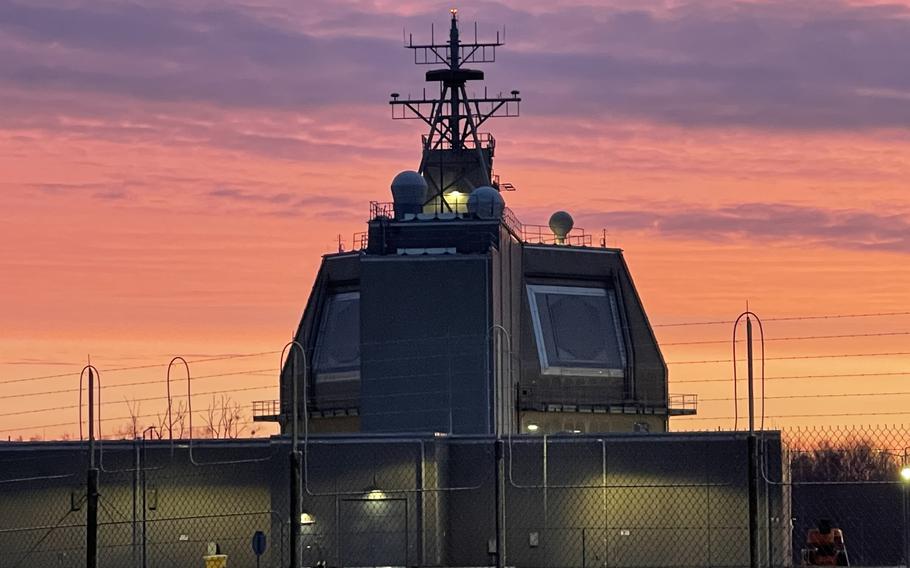
The Aegis Ashore Missile Defense System Poland at Naval Support Facility at Redzikowo, shown earlier this year, has been declared mission-ready by NATO. (Ashleigh Whitney/U.S. Navy)
A U.S. Navy ballistic missile defense site in Redzikowo, Poland, that’s been in the works for more than a decade has finally been declared mission-ready by NATO.
“This is an important step for transatlantic security and NATO’s ability to defend against the growing threat of ballistic missiles,” NATO Secretary-General Jens Stoltenberg said Wednesday during an alliance summit in Washington.
The missile defense site in Poland is part of a broader European shield that includes another U.S. Aegis Ashore site in Romania and U.S Navy destroyers out of Rota, Spain.
An early-warning mountaintop radar in Kurecik, Turkey, manned by the U.S. Army, also is part of the network.
The Poland site can defend against short- to intermediate-range ballistic missiles, NATO said.
“Ballistic missiles have been widely used in conflicts in Ukraine and the Middle East,” Stoltenberg said. “As a defensive alliance, we cannot ignore that threat. Missile defense is an essential element for NATO’s core task of collective defense.”
While the Navy’s site in in Deveselu, Romania, has been operational since 2016, it’s taken many years for the mission in Poland to follow suit.
The initiative is part of a U.S. missile defense effort known over the years as the European Phased Adaptive Approach, which was established in 2009 to counter Iranian ballistic missile threats.
The Poland part of the project was supposed to be ready around 2018, but repeated technical and construction problems at the site delayed the mission.
Navy officials said in December that the system was getting final technical upgrades to make it fully functional and ready to operate under NATO command and control in 2024.
The system, designed to detect, track and intercept ballistic missiles in flight, has been a source of tension with Moscow over the years.
Although the system is defensive in nature, Russia has asserted that it could eventually be modified to counter the Kremlin’s intercontinental ballistic missiles, with an aim of neutralizing Moscow’s nuclear deterrent capability.